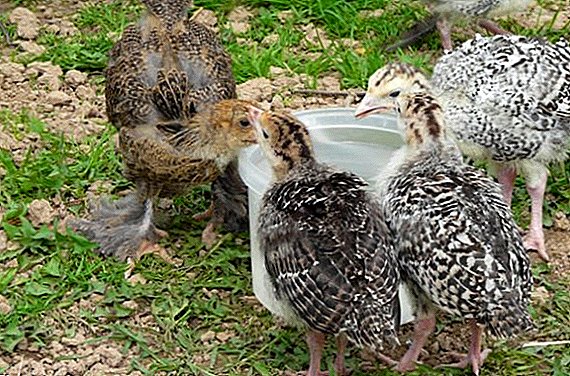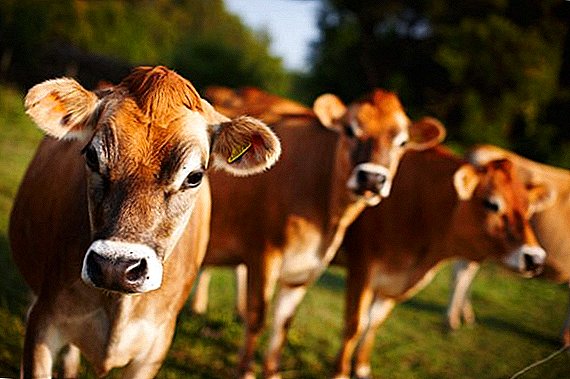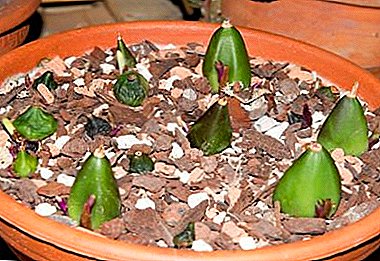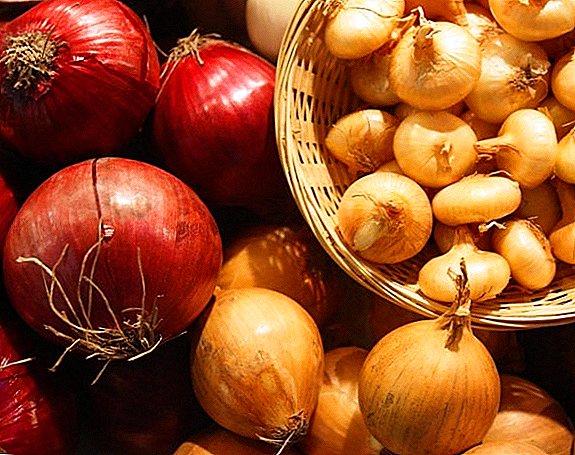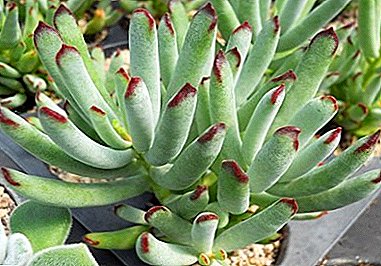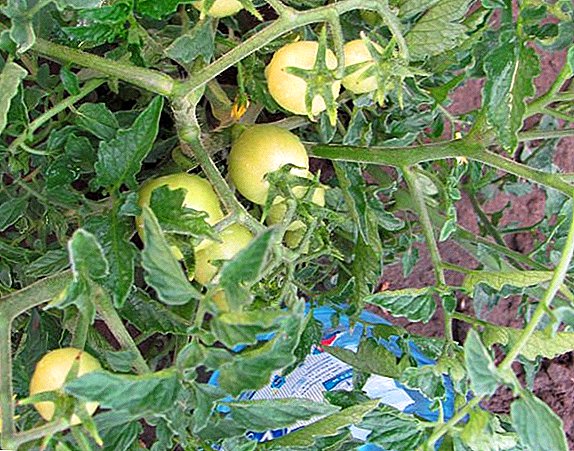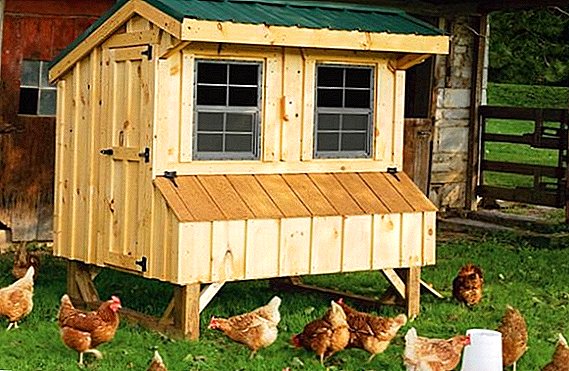 If you are going to thoroughly and for a long time engage in breeding chickens in your yard, the construction of the house is simply necessary.
If you are going to thoroughly and for a long time engage in breeding chickens in your yard, the construction of the house is simply necessary.
Reliable, strong, specially equipped housing for birds allows you to maintain them all year round, without worrying about the severe frosts and bad weather.
For many poultry farmers, the best number of birds is 50 animals. This number does not create difficulties in the care, but this is enough to meet the needs of the family in meat and egg products. Today we consider the requirements for the room, as well as the main stages of work and arrangement.
Features chicken house for 50 chickens
You need to understand that for 50 heads you need sufficient space, and not only inside the house, but also on the territory for walking. The density of planting chickens is as follows: 5 square hectares are allocated 1 square meter. m. It turns out that for such a flock will need 7-10 square meters. m. square inside the building.
To this space is to add space for nests, feeders and watering (in case the bird can not go out during periods of severe frost). The territory for walking should be 2-3 times the size of the house, that is, its value will be up to 30 square meters. m
Learn how to build a chicken coop for 20 and 30 chickens.
Basic requirements for the coop
The house should be built in accordance with certain requirements for comfortable living of birds, as well as for your own comfort when caring for them. 
Location and Fence
With such a large enough livestock, it is desirable to have a room away from residential buildings, because anyway a specific smell may emanate from the house, and when placed remotely, the bird will be less susceptible to noise from your activity. If possible, the room should be located on the south side of the courtyard.
It will be useful for you to read more about where to place the chicken coop.
When designing doors and windows, the sides of the world should be taken into account: the windows should face south (so the birds will receive enough light to maintain egg production normally), the doors should be better located from the east.
In any case, the place to house the house and the courtyard should be protected from the wind, be on level ground and well illuminated by the sun. Territory for walking should be slightly shaded by trees, so that on a hot day the bird has a comfortable place to rest.  Territory for walking must be necessarily fenced to protect against predatory animals and free rampant chickens in the yard. For these purposes, usually use a metal grid with large cells, its height should be about 1.5 for meat breeds (you can do without the top grid).
Territory for walking must be necessarily fenced to protect against predatory animals and free rampant chickens in the yard. For these purposes, usually use a metal grid with large cells, its height should be about 1.5 for meat breeds (you can do without the top grid).
Important! It is impossible to have a poultry house in lowlands and depressions, where cold air, thawed and rainwater accumulate.For egg types of chickens, the height increases to 2-2.5 m, since some particularly inquisitive and active birds are not averse to fly beyond the fence.
Some owners also make the pens closed, pulling the net over the top. This is necessary if there are birds of prey in your area that can attack not only chickens, but also adult individuals. 
Microclimate
In the house itself it is important to ensure an optimal microclimate for the vital activity and productivity of birds. This concept usually refers to temperature and humidity. Temperature indicators are extremely important, because if they break, irrational use of feed occurs (the bird begins to eat more for heating), reduced productivity, mass morbidity and even death (from freezing or asphyxiation).
Poultry farmers will be interested in reading about how to choose a chicken coop when buying, how to build and build a chicken coop with your own hands, how to build a winter and summer chicken coop, as well as how to build a portable chicken coop.
Recommended air humidity should be in the range of 55-70%. Temperature - within + 15 ... 20 ° С. To maintain this temperature in the winter time you need with the help of heating, which will be discussed later. 
Arrangement
Inside the house should be equipped:
- perches for a night's rest;
- nests;
- feeders and drinkers.
Next, we consider the requirements for all the listed items in more detail.
Did you know? On the surface of the eggshell is located about 7 thousand pores.
Ventilation
In the house for 50 animals, it is necessary to make ventilation, because the oxygen consumption for such a livestock is large enough. The ventilation system must ensure the flow of fresh air, the output of ammonia and carbon dioxide, while it should not "suck" heat from the room or create a draft.  The location of the pipes should be convenient for maintenance by a person; they should not contain feed, litter or debris from birds. In small household farms two types of ventilation are used: natural and with the help of pipes. You can also install electric fans, but for a relatively small room it is irrational.
The location of the pipes should be convenient for maintenance by a person; they should not contain feed, litter or debris from birds. In small household farms two types of ventilation are used: natural and with the help of pipes. You can also install electric fans, but for a relatively small room it is irrational.
Frequently used options:
- Supply and exhaust type - simple and effective way of ventilation. It uses two pipes located at different heights from the ground, one of which removes carbon dioxide, and the second supplies oxygen.
- Natural ventilation - a very common, not requiring any cost option. It is carried out at the expense of an open window leaf (sometimes simultaneously with the door). The downside is that there can be drafts. For better effect, the window leaf should be located next to the door, just above the opening.

Lighting
For normal productivity, birds need about 14 hours of daylight. If in summer you can be content with natural light, then in all other seasons you will need to use additional lighting in the house. The brightness of the light is also important, normally it is 5-15 Lx in the recreation area and nests, and about 50-60 Lx in the area of the feeder.
Find out what should be a light day in the hen house, how to organize lighting in the winter.
In a brighter light, the bird becomes anxious and aggressive, it can attack its congeners, and in case of poor lighting, vision problems can begin, appetite and productivity decrease.
Ideally, you should be able to adjust the intensity of the lighting (for example, brighter for easier maintenance of the house). At night, the birds definitely need a period of darkness!  As a light source can serve as ordinary incandescent lamps, fluorescent lamps or fluorescent. Due to the relatively small size, you can turn on and off the lights manually, without installing an automatic system.
As a light source can serve as ordinary incandescent lamps, fluorescent lamps or fluorescent. Due to the relatively small size, you can turn on and off the lights manually, without installing an automatic system.
Protection of the coop from predators
First of all, to minimize the possibility of attacks on chickens can be in the process of building the house:
- For construction you need to use durable and reliable materials that are difficult to damage (glass wool, metal mesh and galvanized sheets, etc.).
- The floor should be poured with foundation with the addition of broken glass.
- There should be no gaps in the house. If any, they need to be embedded with sheet metal.
- The area must be fenced with a grid, the depth of which is not less than 25 cm. This minimizes the risk of undermining.
- Along the perimeter of the grid can be further protected with stones.
- When a possible attack of birds of prey need to take care of the grid over the courtyard.
Read more about how to get rid of fleas, ferrets, weasels and rats in the chicken coop.
Directly to deal with pests in the form of weasels, ferrets, foxes, etc., you can use modern instruments. For example, you can install electronic repellents.
Video: protecting the coop from predators They emit low-frequency impulses that act frighteningly on animals. Also a good option is to install lamps with motion sensors.
When fixing the movement of such devices begin to flash and make a noise. The downside is that they can respond to both you and pets. You can also set traps with baits. Indoors, you can hang a pair of goat skins - found that weasels do not tolerate this smell. Even a dog untied for the night can frighten away uninvited guests.
Did you know? Unpretentiousness of chickens sometimes borders on promiscuity: they can lay eggs in any nest, even if it is filled with alien eggs. When hatching, the birds also do not distinguish their eggs from others, moreover, they can incubate the offspring of other species of birds.
Chicken coop for 50 chickens with their own hands
When you have decided on the location of the house and the territory, you can safely proceed to the construction. Next step will analyze all stages of the construction and arrangement of the house. 
Designing a chicken coop for 50 chickens
Before the construction itself, it is worthwhile to elaborate the project of the house, calculating the area, location and dimensions of window and door openings, location of nests and perches.
Also at the design stage you need to consider the location of the light, ventilation passages, heating system. The design will allow you to calculate the approximate cost and the required amount of building materials, as well as to avoid waste.
Earlier, we indicated that a flock of 50 heads would require an area of about 10 square meters. m (2.5 * 4 m). In order to maintain an optimal microclimate and ease of maintenance of the house, its height should be no more than 180 cm.  Sketch drawing of a chicken coop for 50 chickens
Sketch drawing of a chicken coop for 50 chickens
Foundation device
Consider the option of a columnar foundation.
For its construction will require bricks, sand, gravel and cement:
- For convenience and accuracy of work, you need to hammer the reinforcement in the corners of the future building, pull the rope and measure all sides and angles: they must be flat and fit the planned size of the room.

- In the corners and along the perimeter of the intended area, you need to dig pits 0.5 m deep and 0.5 * 0.5 m wide. A distance of 1 m must be maintained between the pits' centers. If clayey soils are under this layer, you need to fill in a layer of sand will serve as a pillow.
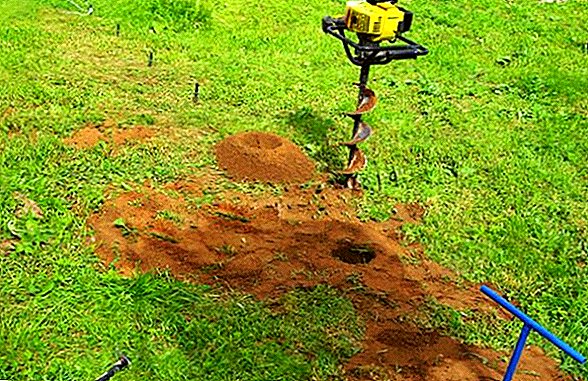
- Next, prepare the solution. Crushed stone, sand, water and cement should be mixed in proportions of 3: 2: 1: 1. The mixture is poured into the pits to the level of the soil.
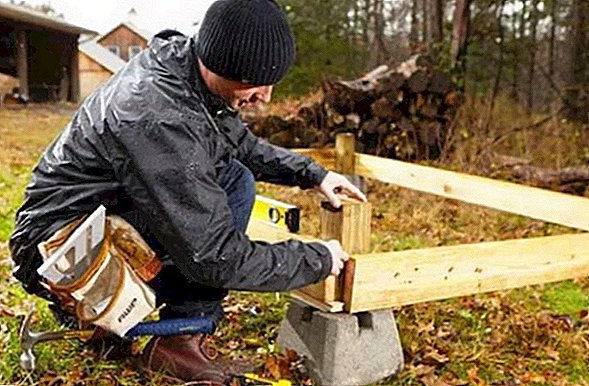
- With the concrete completely dry, each pillar must be raised 30 cm above the ground with a brick and mortar. With the help of the level you need to control the laying horizon.
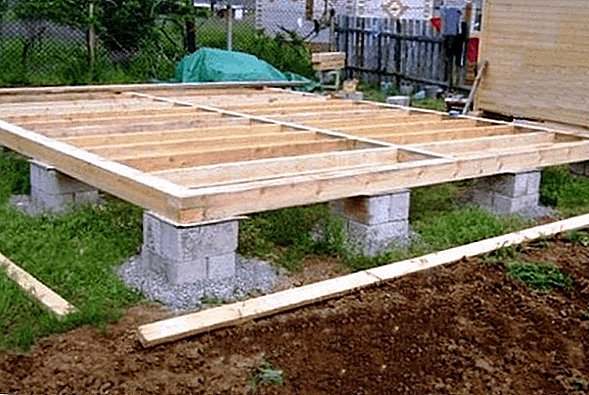
This construction of the foundation ends and you can begin to lay the floor.
Laying the floor
To build the floor of the house, you need to perform the following steps:
- Roofing layer is laid on the foundation pillars.
- Next put the first layer of timber. The distance between the bars should be 1 m.
- On these pillars spread the draft floor of the boards.
- Top boards are covered with a layer of vapor barrier film.
- On top of the film are packed bars at a distance of 70 cm.
- The space between the bars is rammed with a layer of insulation.
We advise you to familiarize yourself with the various options for arranging the floor in the hen house.
- At the end of the floor boards are attached to the floor boards.

Walling
Among the materials for the construction of walls are the main ones: brick, cinder block, wood. In the first two cases, the insulation of the building will be low, as the brick does not keep heat well.
Therefore, we consider the option of building walls from a wooden frame, insulation and plating:
- From the wooden bars 15 * 10 cm erected a framework for future construction.
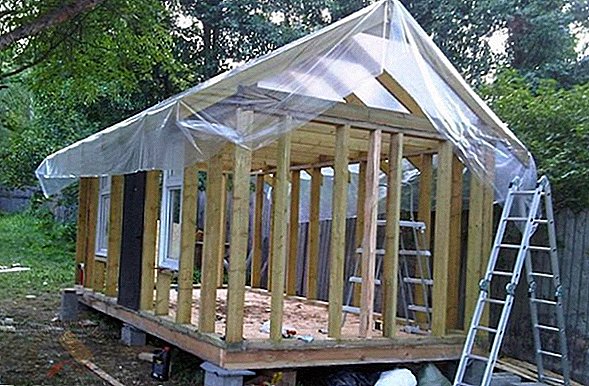
- From the outside, the frame is sheathed with OSB-plates (can be replaced by boards or plywood).
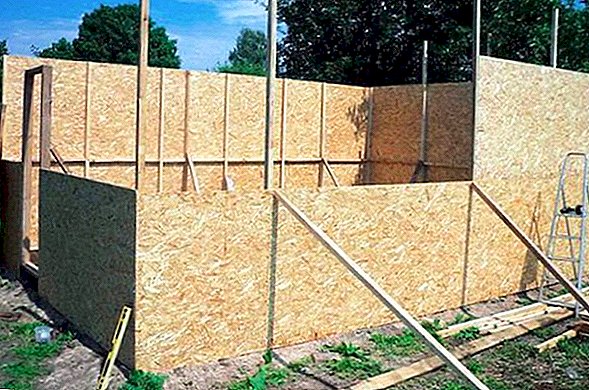
- Inside between the bars laid insulation. As it can be used mineral wool with a layer of 10 cm or foam.
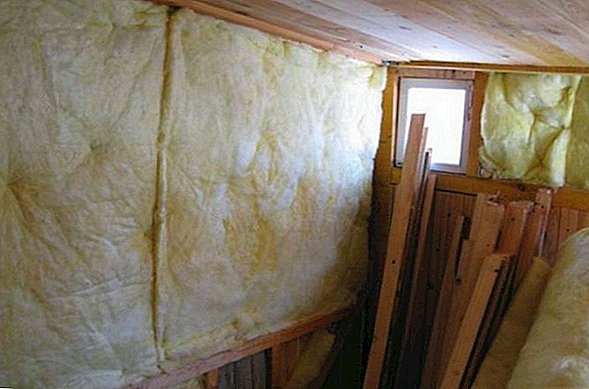
- On top of the insulation the inner walls are sheathed with OSB-plates.
Important! When teething windows, remember that vertical holes give more light than horizontal holes with equal area.
To calculate the size of windows should follow the rule: 1/10 of the size of the area. Accordingly, if the area of the house is 10 square meters. m., then the total windows will occupy 1 square. m. walls. Two windows with dimensions of 70 * 70 cm will be quite enough.
However, in summer, if necessary, you will need to take care of shading, and in the winter - with additional film insulation. Next to the doorway is necessary to make a hole for the exit of birds. It should be placed at a height of 20 cm from the floor, its dimensions - 30 * 30 cm. Be sure to attach the grid or door to close the manhole.
Roofing device
The final stage of construction is the construction of the roof. You can do shed or gable roof. Also, it is useful to attach the eaves near the entrance. 
We will consider a variant of a gable roof:
- Ceiling beams are mounted on the walls.
- Next, set the rafters. On top of them lined with a layer of waterproofing material (for example, roofing material). Each new sheet of roofing material needs to be laid with an overlap of 20 cm.
- Over the ruberoid crate is stuffed.
- The final point in the external structure of the roof is the installation of roofing. You can use roofing felt, roofing material, shingles.
- Inside, the ceiling beams are covered with a board or plywood, a vapor barrier is placed on top of it, and mineral wool 10 cm above it.
Lighting
As we have already indicated, the main parameters of illumination are duration (14 hours per day) and intensity (5-15 Lx and 60 Lx in different zones).
Important! In order to prevent slander, anxiety and excitability, the light in the house should be red.
Consider the various sources of light, their pros and cons:
- Incandescent lamps. It is suitable for use in small houses. They are inexpensive, easy to operate, you can choose a different spectral range of light, can also serve as a point source of heat. However, they will have to be changed relatively often, and with a large amount you can feel the whole energy consumption.

- Fluorescent lamps. Durable, easy to mount and operate, energy-saving, give good coverage. In the conditions of large poultry farms, this option is obsolete, but it is quite acceptable for placing 50 heads. However, it is necessary to take into account the disadvantages: low-quality lamps give a flicker, noticeable for chicken view, you can adjust the brightness of such lamps only with a dimmer, after using them you need to recycle, and not just throw it into the common garbage. In addition, the spectral range is not quite suitable for chickens.
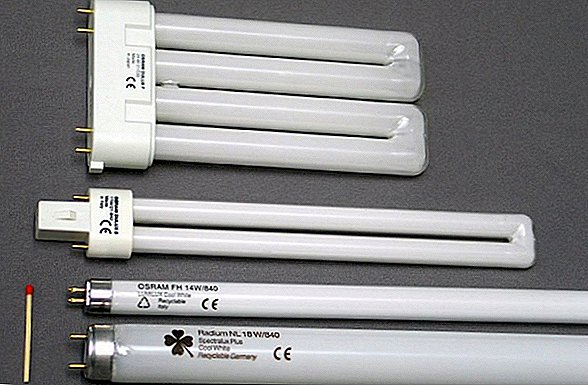
- LED bulbs. Costly, however, the most progressive and quickly paid back lighting option. Such lamps will serve for a very long time, they have a good spectral range, the brightness of the light is easily adjustable, the LEDs consume little electricity, they are extremely easy to maintain.

For adult chickens of the egg breed will need 6 watts per 1 square. m., that is, an area of up to 10 square meters. m. will be quite enough two light bulbs.
Ventilation
We will consider a very simple and highly efficient ventilation system from supply and exhaust pipes. To install the ventilation system, two metal pipes with a diameter of 15–20 cm and a length of 200 cm and 50 cm will be required. The inlet pipe (long) is installed vertically 20 cm above the floor, so that its top is displayed above the roof itself.
We recommend to get acquainted in detail with the types of ventilation and how to make it yourself.
The outlet pipe is installed vertically, so that the room remains about 10 cm in length, the remainder is displayed outside. Pressure is created in the pipes, carbon dioxide, moisture and ammonia are discharged, and fresh air enters inside.
Video: ventilation device in the hen house Even in winter, such ventilation is absolutely safe, as it does not create drafts.
Providing heat in the coop
It is necessary to pay particular attention to weathearing of the coop, especially if prolonged frosts are characteristic of your region in winter. Remember that the mark on the thermometer should not fall below +12 ° C in the house, otherwise feed consumption will increase, the chickens will freeze and hurt, lose activity and productivity.
Maintain the desired temperature in the house can be due to the wall insulation, and with the help of special devices and devices.
Natural insulation
With this kind of insulation, no devices and devices are used; instead, natural materials are used.
Familiarize yourself with the choices and uses of fermentation litter for chickens.
A very effective way to keep the house warm is to use bedding. Hay, straw or sawdust can be used as bedding material.  The first two options, though they keep warm well, but they quickly clump together and become moldy. Therefore, it is best to use sawdust - they are laid on the floor with a layer of 10-15 cm and a new layer is added as tamping is applied.
The first two options, though they keep warm well, but they quickly clump together and become moldy. Therefore, it is best to use sawdust - they are laid on the floor with a layer of 10-15 cm and a new layer is added as tamping is applied.
After winter, the litter layer can reach 25-30 cm.Gradually, this natural material begins to turn into compost, releasing heat and disinfecting litter.
Important! Natural warming will help maintain the temperature in the aviary to +12 ° C only if the frost in your area does not exceed -10 ° C. Otherwise, the tangible effect of such insulation will not be.
If you live in a region with very cold winters, you should think about more effective ways to heat the house. There are a lot of variants today: it can be both devices with power supply from a network, and other devices. 
Using electricity
Electric heating options:
- Infrared floor films. Efficient, reliable, fireproof method of heating the house. For heating 10 square meters. m. need 0.8-1.2 kW of power.
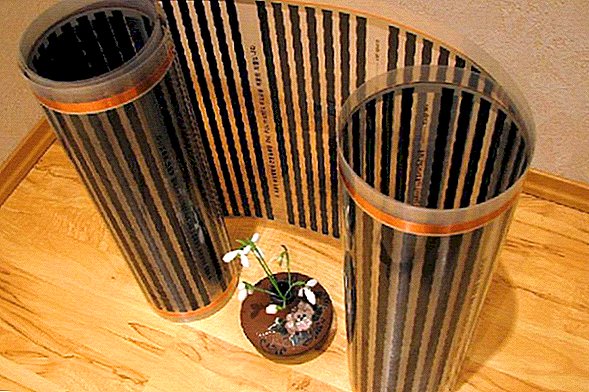
- Electric heaters. There is also a lot of varieties: convectors, oil heaters, heaters, fan heaters.
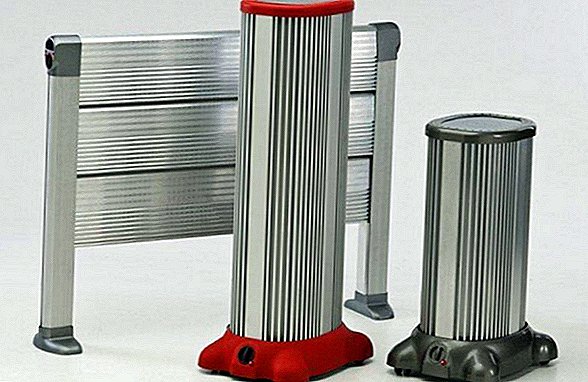
- Infrared heaters. Very common and effective option. Such heaters do not heat the air, but objects, so heat stays longer. Heaters are attached to the wall, on an area of 10 square meters. m. will be enough appliance power of 1 kW. However, for safe operation, you need a thermostat!
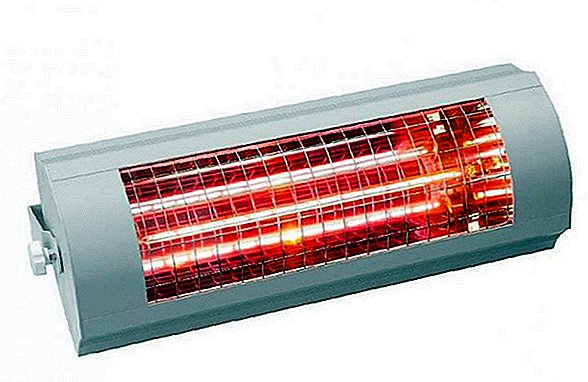
Without electricity
In this case, there are plenty to choose from:
- Gas heater. The option is effective, but only in a large farm. For an area of 10 square meters. m. it is irrational to buy a gas boiler.
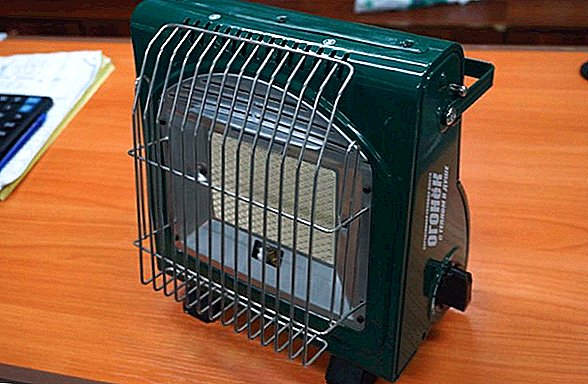
- Stove heating. Effective, but not the best option for the house. The use of a stove is associated with a high risk of fire hazard, the constant need to control and maintain combustion, the need to build a chimney, isolate furnace elements, etc. For a small chicken coop with 50 heads, such heating is not rational.
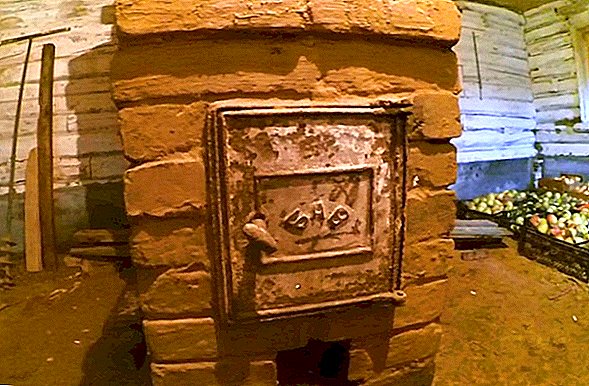
- Diesel stove. Safe, efficient, energy-intensive option.
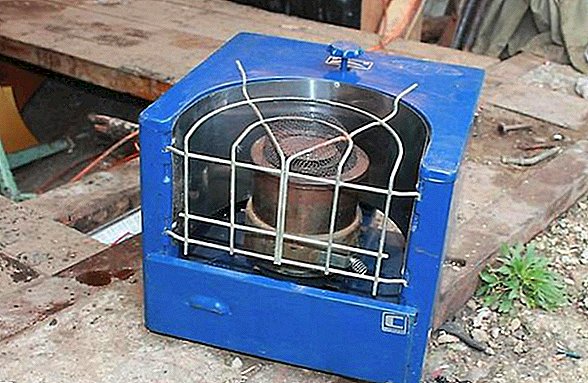
- Water heating. An effective option, however, is possible in the implementation only if the house is attached to the dwelling.
Thus, the most effective, inexpensive, and therefore the most popular way of heating is the use of infrared films and lamps.
How to equip a chicken coop for 50 chickens
Upon completion of construction work it remains only to equip the poultry house with necessary items. Earlier we listed that in the enclosure must be roost, nests, feeders and drinkers.
Now consider this inventory in more detail:
- Perches usually made of wooden bars with a diameter of 5 cm. Above the floor they are located at a height of 60-90 cm, the distance between them is 25-35 cm up to 25 cm poles. Total for a livestock of 50 pieces will need about 9-12 m poles in total. For a chicken coop 4 m long, they can be arranged in 4 rows of 3 m each with a distance of 30-40 cm between the poles. It is important to have poles at different levels ("herringbone"), because chickens have their own hierarchy, and such an arrangement of the perch will contribute to the proper separation of birds. However, it is impossible to place them directly one above the other, so that the birds from the upper tier do not soil the droppings of the lower chickens.
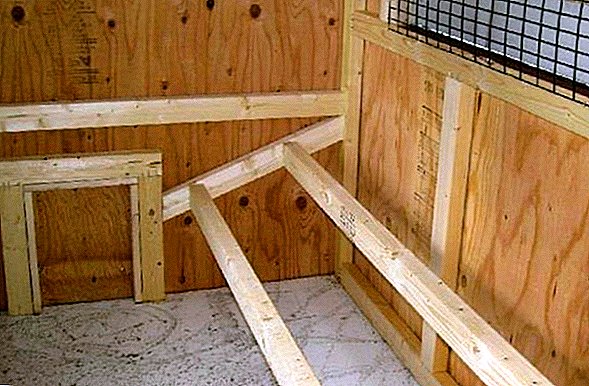
- Nest Standardly made from wooden boxes filled with straw or hay. They must be installed in a secluded place, 40 cm above the ground. If you place them under the wall, it is better to warm this part of the wall. The number of nests is calculated as follows: for 5 layers - one nest. Accordingly, at least 10 nests will be needed on your livestock.

- For feeders usually use oblong narrow tanks made of galvanized metal or wooden boards.
It will be useful for you to read about how to independently make roosts, nests, drinking bowls and feeding troughs (automatic and bunker) for chickens.
As a rule, a feeding trough of 100 * 17 cm in size satisfies the needs of 15 adults. Total it turns out that you will need 3 such feeders for livestock.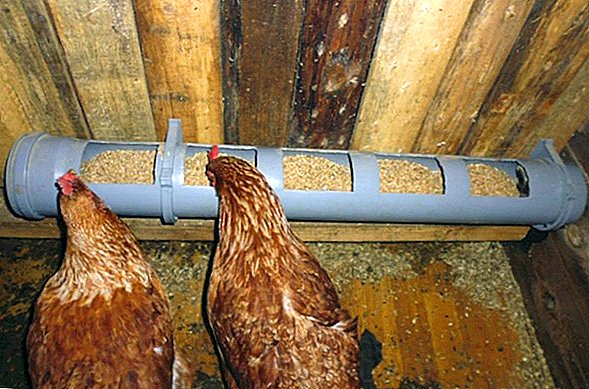
The content of the coop for 50 chickens
Before settling chickens room must be prepared:
- First of all, it is necessary to carry out mechanical cleaning. All surfaces and walls should be brushed with a broom, remove remnants of building materials, dust and debris.
- Next you need to carry out wet cleaning with a solution of potassium permanganate. If desired, you can whiten the walls of the house.
- In conclusion, it is worth to disinfect with special preparations. You can use potent toxic drugs (for example, delegol or Glutex), however, in the presence of feathered data these tools are unacceptable! Virocid, Vercon have a milder effect. Then they can be used even in the presence of birds.
Read more about how to properly disinfect in the hen house.
In the future, preventive treatment of the poultry house will need to be carried out once a year, and in the case of avian disease, disinfection will be required both during the course of the disease and after recovery of all individuals. Monthly disinfection of the house will be required. Weekly you need to clean the litter, since it is he who is the main source of many infections.
Video: Chicken Coop Processing On warm sunny days in summer, leave the house open, because the fresh air and the sun's rays also have an excellent disinfectant effect.
Did you know? The egg is formed in the reproductive organs of the chicken 24-25 hours. At the initial stage it is just the yolk. While he is moving the fallopian tubes, he has time to “acquire” the protein and then the calcium membrane. In conclusion, the shell is painted in pigment.
To care for the aviary you will need the following inventory:
- special scraper for removing litter;
- shovels, vila, brooms, brooms;
- Hook for catching birds.
It is also worth regularly inspecting the premises for digging or any other damage. If gaps are found, they should be sealed with metal plates, but in no case with clay or wood.  We hope that now the construction of a stationary poultry house looks in your eyes is not a difficult task, but quite a feasible occupation. Reliable house will greatly simplify the care of chickens, relieve you from experiences about frost, rain and other bad weather. Keeping birds in a clean, dry, warm room is almost one hundred percent guarantee of their good health and productivity.
We hope that now the construction of a stationary poultry house looks in your eyes is not a difficult task, but quite a feasible occupation. Reliable house will greatly simplify the care of chickens, relieve you from experiences about frost, rain and other bad weather. Keeping birds in a clean, dry, warm room is almost one hundred percent guarantee of their good health and productivity.























